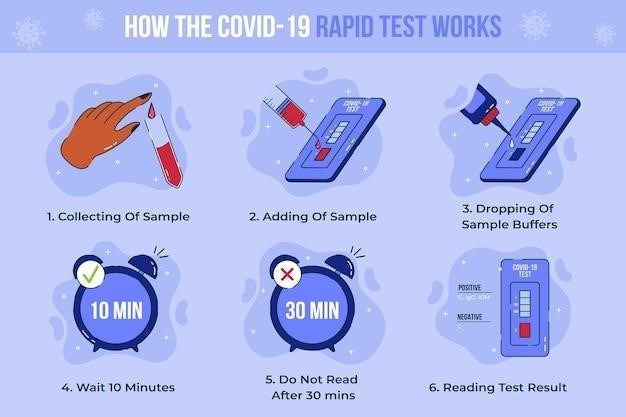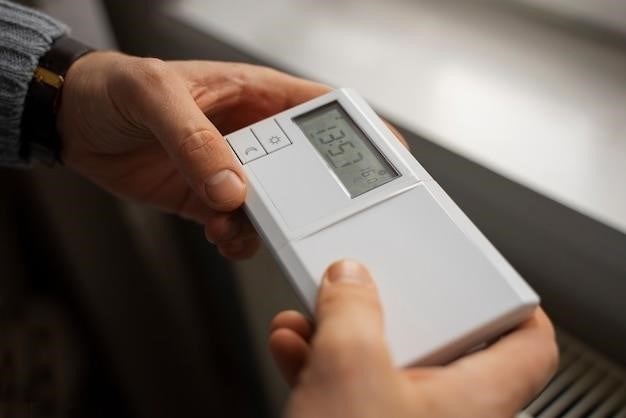This guide provides a comprehensive overview of the recommended temperature settings for using an HTVRONT heat press‚ ensuring successful heat transfer applications. We’ll delve into the ideal temperature ranges‚ factors influencing temperature selection‚ and specific settings for different materials. From HTVRONT HTV to sublimation paper and heat transfer vinyl‚ this guide offers valuable insights for achieving professional-quality results.
Introduction
The HTVRONT heat press is a versatile tool for crafting personalized apparel‚ accessories‚ and home décor. Its ability to apply heat transfer vinyl (HTV) and other materials to various surfaces makes it a popular choice for DIY enthusiasts‚ small businesses‚ and even large-scale production. However‚ mastering the art of heat pressing requires understanding the crucial role of temperature in achieving successful and long-lasting results. This guide delves into the intricacies of HTVRONT heat press temperature settings‚ providing a comprehensive understanding of the factors that influence optimal heat application.
From the recommended temperature ranges for different HTVRONT HTV materials to the impact of fabric type and thickness‚ we will explore the key considerations for achieving flawless heat transfers. We will also discuss the significance of pressure and time in conjunction with temperature‚ ensuring that you have a complete grasp of the heat pressing process.
This guide is designed to empower you with the knowledge needed to confidently navigate the world of HTVRONT heat pressing. By understanding the principles behind temperature selection and its relationship with other critical factors‚ you can unlock the full potential of your heat press and create professional-quality projects.
HTVRONT Heat Press Temperature Range
The HTVRONT heat press offers a wide temperature range‚ typically from 100 to 356 degrees Fahrenheit‚ allowing for versatility in handling various materials. However‚ the ideal temperature for heat pressing depends on the specific type of HTV being used‚ the fabric or substrate being transferred to‚ and the desired outcome. Understanding the nuances of this range is crucial for achieving successful heat transfers.
For most HTVRONT HTV materials‚ a temperature range of 305 to 329 degrees Fahrenheit is generally recommended. This temperature provides sufficient heat to activate the adhesive in the HTV‚ ensuring a strong bond to the fabric. However‚ certain types of HTV‚ such as glitter HTV‚ may require lower temperatures to prevent melting or damage. Sublimation paper‚ on the other hand‚ requires higher temperatures‚ typically around 311 to 329 degrees Fahrenheit‚ to achieve optimal dye transfer.
The HTVRONT heat press features adjustable temperature settings‚ allowing you to fine-tune the heat level based on your project requirements. Refer to the specific instructions for your HTVRONT HTV or other heat transfer materials to determine the optimal temperature range for your intended application.
Recommended Temperature for HTVRONT HTV
While a general temperature range of 305 to 329 degrees Fahrenheit is often recommended for HTVRONT HTV‚ it’s crucial to consider the specific type of HTV you’re using. Different HTV materials have varying adhesive properties and heat tolerances; Some types‚ such as glitter HTV‚ may require lower temperatures to avoid melting or damage. For most standard HTVRONT HTV‚ a temperature of around 315 degrees Fahrenheit is a good starting point.
The recommended heat press time for HTVRONT HTV is typically 10 to 15 seconds. Applying firm pressure during this time ensures a strong bond between the HTV and the fabric. However‚ pressing for longer durations may not always result in a better bond. It’s essential to follow the specific instructions provided with your HTVRONT HTV for optimal results.
It’s also important to note that the color of the HTV can influence the recommended temperature. Darker HTV colors often require slightly higher temperatures than lighter colors to ensure proper adhesion. Experiment with different temperature settings to find the ideal balance for your specific project and HTV type.
Factors Affecting Heat Press Temperature
Several factors can influence the optimal heat press temperature for successful HTV application. Understanding these factors allows you to adjust your settings for specific projects and materials‚ ensuring a perfect bond.
- Fabric Type⁚ The type of fabric you’re using plays a significant role. Natural fabrics like cotton and linen generally require higher temperatures than synthetic fabrics like polyester or nylon.
- Fabric Color⁚ Darker fabrics tend to absorb heat more readily‚ potentially requiring a lower temperature setting compared to lighter fabrics.
- HTV Thickness⁚ Thicker HTV materials may require a slightly higher temperature and longer press time to ensure complete adhesion.
- HTV Type⁚ Different types of HTV‚ such as glitter HTV‚ flock HTV‚ or glow-in-the-dark HTV‚ may have specific temperature recommendations.
- Design Complexity⁚ Intricate designs with fine details may benefit from a slightly lower temperature to prevent the HTV from spreading or distorting.
Always refer to the manufacturer’s instructions for your specific HTV and fabric types. It’s always wise to conduct test runs on scrap fabric to determine the ideal temperature for your project.
Heat Press Time and Pressure
Beyond temperature‚ heat press time and pressure are crucial factors in achieving a successful heat transfer. These elements work in tandem with temperature to ensure the HTV adheres properly to the fabric.
- Press Time⁚ The duration of the press is directly related to the thickness of the HTV‚ the fabric type‚ and the desired adhesion strength. Thicker HTV generally requires a longer press time to allow the adhesive to fully melt and bond.
- Pressure⁚ Applying adequate pressure during the press is equally important. This ensures the HTV makes full contact with the fabric‚ allowing for a strong and durable bond. Insufficient pressure can lead to uneven adhesion or peeling.
- Pressure Settings⁚ Most HTVRONT heat presses offer adjustable pressure settings. Experiment with different settings based on the fabric type and HTV thickness to find the optimal pressure for your project.
- Even Pressure⁚ Ensure even pressure is applied across the entire design area. Uneven pressure can result in inconsistent adhesion and may cause the HTV to lift or distort.
It’s essential to strike a balance between temperature‚ press time‚ and pressure for optimal results. Remember‚ a longer press time doesn’t necessarily guarantee a stronger bond. Excessive pressure can damage the fabric or distort the design. Always refer to the HTV manufacturer’s recommendations for specific press time and pressure settings.

HTVRONT Heat Press Settings for Different Materials
The ideal heat press settings for HTVRONT vary depending on the specific material being used. Different materials have different melting points and adhesive properties‚ requiring adjustments to temperature‚ time‚ and pressure. Here’s a breakdown of recommended settings for common materials⁚
- HTVRONT HTV⁚ HTVRONT HTV typically requires a temperature of around 315°F (157°C) with a press time of 10-15 seconds. Ensure firm pressure is applied during the press. Allow the HTV to cool for 30-45 seconds before peeling the carrier sheet for optimal adhesion.
- Sublimation Paper⁚ Sublimation paper requires a higher temperature‚ typically around 350°F (177°C) with a press time of 20-30 seconds. Use firm pressure and ensure the paper is in direct contact with the fabric. After pressing‚ allow the fabric to cool completely before peeling the paper.
- Heat Transfer Vinyl⁚ Heat transfer vinyl (HTV) is a versatile material available in various colors‚ finishes‚ and textures. The specific settings for HTV depend on its type and the fabric it’s being applied to. Refer to the manufacturer’s guidelines for recommended temperature‚ time‚ and pressure settings.
- Other Materials⁚ For other materials like heat transfer glitter‚ flock‚ or foil‚ consult the manufacturer’s recommendations for specific heat press settings. These materials may require different temperatures‚ press times‚ and pressure levels for optimal results.
Always test your settings on a scrap piece of fabric before applying to your final project. Adjust the settings as needed to achieve the desired adhesion and prevent damage to the fabric.
Tips for Successful Heat Pressing
Achieving flawless heat press results requires attention to detail and a few key tips. By following these guidelines‚ you can minimize errors and enhance the quality of your heat transfers⁚
- Cleanliness is Key⁚ Before starting‚ ensure your heat press platen is clean and free of debris. Any residue or imperfections can affect the adhesion of the transfer material. Use a soft cloth and mild cleaning solution to wipe down the platen.
- Proper Placement⁚ Carefully position your design on the fabric‚ ensuring it’s centered and aligned as desired. Use a ruler or measuring tape for precision and avoid wrinkles or creases in the fabric.
- Pressure Matters⁚ Apply consistent pressure throughout the press cycle. Insufficient pressure can lead to uneven adhesion‚ while excessive pressure can damage the fabric or design. Most heat presses have adjustable pressure settings; experiment to find the ideal balance.
- Peel Carefully⁚ After the press cycle‚ allow the design to cool completely before peeling the carrier sheet. Peeling too soon can result in the design lifting or stretching. Start peeling from a corner and slowly work your way across the design.
- Practice Makes Perfect⁚ Heat pressing is a skill that improves with practice. Don’t be afraid to experiment with different settings and techniques to find what works best for you and your specific projects.
By following these tips and paying close attention to your heat press settings‚ you can confidently create professional-looking heat transfers that will last.
Troubleshooting Heat Press Issues
Despite careful preparation‚ heat press issues can arise. Here’s a guide to identifying and resolving common problems⁚
- Design Not Adhering⁚ If the design lifts or peels easily‚ the temperature may be too low‚ or the pressure insufficient. Increase the temperature slightly and apply more pressure for the next press cycle; Ensure the carrier sheet is removed at the appropriate time.
- Design Cracking or Fading⁚ Excessive heat or pressure can damage the design. Reduce the temperature and pressure for subsequent presses. Consider using a heat-resistant material like parchment paper to protect the design during pressing.
- Uneven Adhesion⁚ Uneven pressure can lead to a design that adheres unevenly. Ensure the platen is clean and the fabric is smooth before pressing. Adjust the pressure settings on your heat press as needed.
- Design Lifting at Edges⁚ This could indicate insufficient pressure or a wrinkled fabric surface. Increase the pressure and ensure the fabric is smooth and flat before pressing. Consider using a heat-resistant pressing pad for added support.
- Design Sticking to the Platen⁚ If the design sticks to the platen‚ it could be due to a buildup of adhesive or a malfunctioning heat press. Clean the platen thoroughly and check for any obstructions or damage. If the issue persists‚ consult the manufacturer’s instructions or seek professional assistance.
Remember‚ patience and experimentation are key to resolving heat press issues. By carefully analyzing the problem and adjusting your settings‚ you can troubleshoot most common problems and achieve successful heat transfers.
Mastering the art of heat pressing with an HTVRONT heat press involves understanding the nuances of temperature and time settings. This guide has provided a comprehensive overview of the essential factors influencing heat press success‚ from recommended temperatures for various materials to troubleshooting common issues.
By adhering to the principles outlined‚ you can achieve professional-quality heat transfers that are vibrant‚ durable‚ and long-lasting. Remember‚ consistency is key. Invest in quality materials‚ practice your technique‚ and don’t hesitate to experiment to find the optimal settings for your specific projects.
With proper care‚ your HTVRONT heat press can become a valuable tool for creating personalized apparel‚ accessories‚ and other creative endeavors. Embrace the creative possibilities that heat pressing offers and enjoy the satisfaction of bringing your unique designs to life.
